More about: 2 Days in Rome
Are you going on a weekend getaway to Rome? Then you'll want to read this: in two days in Rome you'll have just enough time to see the Sistine Chapel, marvel at the views from the dome of St. Peter's Basilica, explore the Colosseum and stroll through the majestic piazzas of the city center.
How to skip the lines, how to get to each site quickly, where to eat and how much time to spend on each visit, all this and more in this perfect itinerary to see Rome in 2 days.
Day 1: The Colosseum, the Roman Forum, the Palatine Hill and the Historic Center
The plan is simple: see enough of Rome to fall in love with the city and want to return, but with the feeling that you've seen its main attractions.
The Colosseum
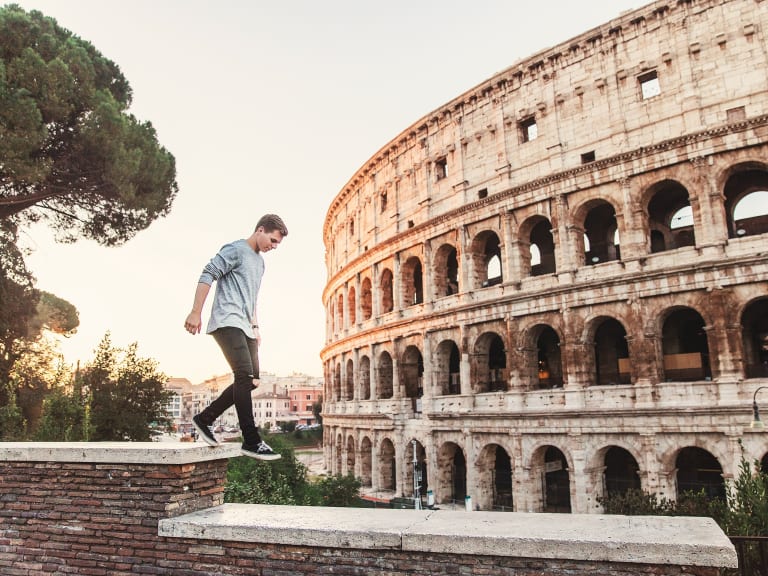
If you've never been to Rome, visiting the Colosseum is one of the top attractions on your list of priorities during your trip. It is one of the seven Wonders of the World and one of the most representative monuments of the Eternal City.
It is one of the most visited attractions in the city, so on a two-day trip it is essential to book your Colosseum tickets in advance to skip the line.
- Opening hours are from 8:30 am to 7:00 pm, every day except December 25 and January 1.
- In the post on how to get to the Colosseum in Rome you can learn about all the options to go to the monument.
- One of the best tips to visit the Colosseum is to go early in the morning to make the most of the day.
The Roman Forum and Palatine Hill
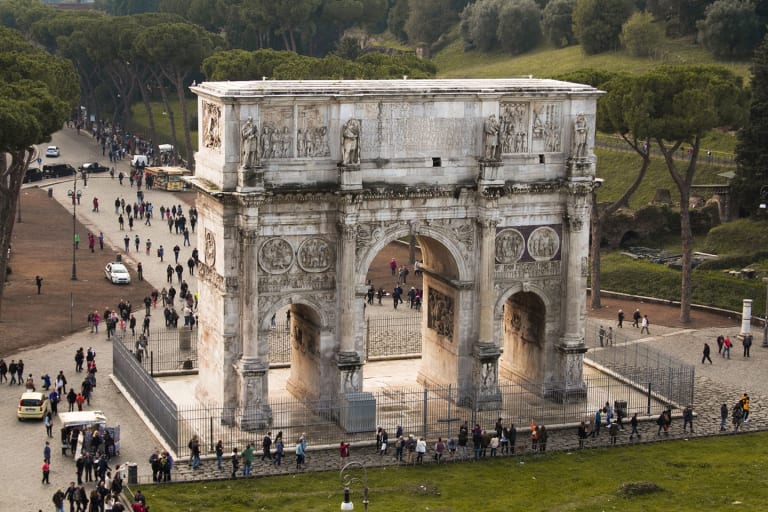
The Roman Forum is the historical center of the city, the heart of Ancient Rome.
It is a collection of ruins of ancient markets, temples and official buildings more than two millennia old, with views of St. Peter's Basilica in the distance and the Colosseum in the background.
If you have your ticket to the Roman Forum, head to the Palatine Hill, one of Rome's seven hills. The best access is usually from Via di San Gregorio, where there is less of a queue to enter. You will have to turn around a bit coming from the Colosseum, but it will be worth the time savings.
Lunch stop: recommendations

- In the area of the historic center, I recommend the Ristorante Fiammetta in Piazza Fiammetta, 10. It is a traditional Italian trattoria where you can eat both on the premises and on the terrace, with very tasty dishes and for a price between 20 and 25 € per person.
- Closer to the Colosseum I recommend the Taverna dei Fori Imperiali, a place where they serve quality homemade food for a price of around 20 € per person. It is located in Via della Madonna Dei Monti, 9.
- If you want to explore other dining recommendations, I have written an article that will help you decide where to book a table during your getaway to Rome: 10 Places to Eat in Rome.
Stroll through the Historic Center

After lunch and after a break in which you will surely not resist tasting the famous Italian 'espresso', the day continues with a walk through the center of Rome, in which you will see the most beautiful places of the city:
- Piazza di Spagna.
- Fontana della Barcaccia,.
- Trevi Fountain.
It is also a good time to take the tour of the fountains and squares of Rome, where you will know the most important and curious ones and you will have the opportunity to know why they were so important.
Continue with emblematic places
The Pantheon is the next stop on the itinerary, the best preserved building of Ancient Rome. It was built as a temple dedicated to the ensemble of Roman gods, and in the 7th century it became the Basilica of St. Mary and the Martyrs.
Inside, an oculus at the top of the dome lets in light and creates a magical atmosphere of light and shadow on the mosaics and sculptures on the walls. And if you have time, I recommend you to hire a guided tour of the Pantheon and get to know it better. After this visit, continue to:
- Piazza Navona, the center of city life. It is a colorful square full of bars, restaurants, cafes and three beautiful fountains to relax by.
- Campo de' Fiori, a square where a large market of all kinds of goods and flower stalls are placed. A somewhat different atmosphere than centuries ago, since in this square used to take place public executions.
- Have a drink in Trastevere.
- Choose a place to dine outdoors, I would not think twice and get a pizza at Pizzeria Ai Marmi, in Viale di Trastevere, 53-59.
Day 2: Sistine Chapel, St. Peter's Basilica and Castel Sant'Angelo
The second day of your trip will be more oriented towards entering **Rome'**s must-see buildings, the Vatican Museums and St. Peter's Basilica, and then taking a walk to Castel Sant'Angelo from where you can return to the city center.
Sistine Chapel
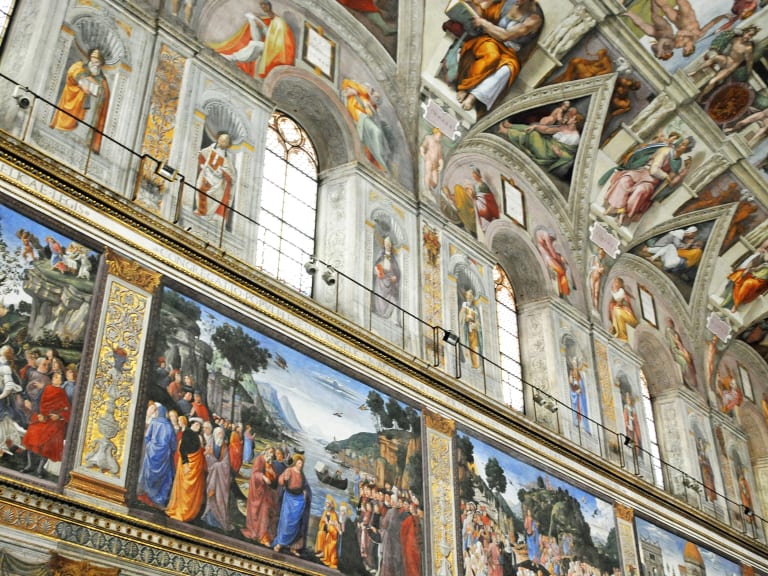
The second day begins with a visit to the Sistine Chapel. To do this, you will need to buy tickets for the Sistine Chapel in advance.
I recommend going at the first opening, at 9 am, to enjoy it properly without the masses of tourists that crowd the Sistine Chapel during the rest of the day.
Something to keep in mind is that the Vatican Museums are closed on Sundays, except for the last Sunday of each month. In case you are going to be in Rome on Saturday and Sunday, you will have to visit the Sistine Chapel on Saturday or do an alternative activity. This article may give you some ideas: 10 Secret Spots in Rome.
St. Peter's Basilica

Then, take a stroll through the grandiose St. Peter's Square, continue to the next stop: St. Peter's Basilica.
Admission is free, but if you want to skip the line you will need to book a tour of St. Peter's Basilica with an official Vatican guide. I tell you how to book your tickets here: Skip-the-line Tickets for St. Peter’s Basilica in Rome: How to Buy, Prices and Opening Hours.
Once inside, I recommend you stop to admire Michelangelo's Pieta, located in the first chapel on the right as soon as you enter, the Baldacchino in the center of the basilica, under which the main altar of this temple is located, and the tomb of Pope Alexander VII.
Castel Sant'Angelo
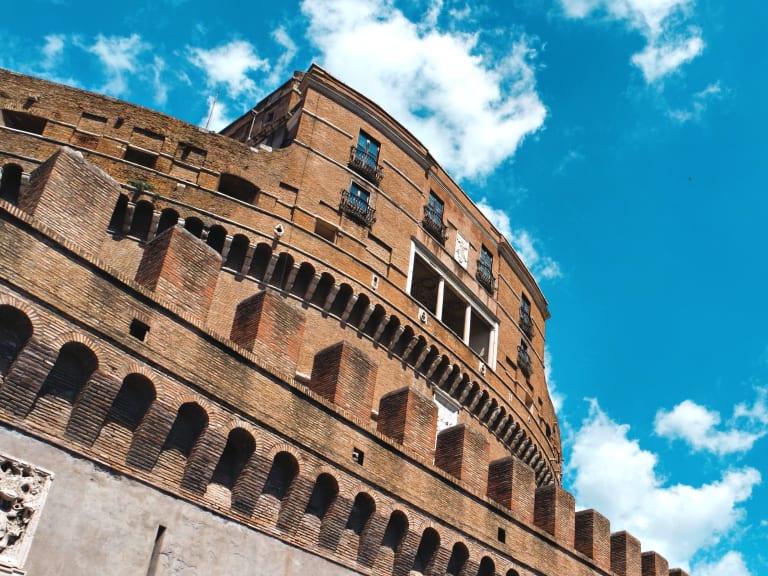
The third visit of the day is Castel Sant'Angelo, which was built as a mausoleum and throughout its history has had several uses, including serving as a fortress for the Pope in case of war.
In my opinion, it is not worth buying tickets to visit the inside of Castel Sant'Angelo on a 2-day trip to Rome, but you can take a walk around and enjoy the views of the Tiber River from Ponte Sant'Angelo.
Stop for lunch

By this time, your stomach will be rumbling and you will need to find a place to eat. Il Sorpasso is a good choice near the Vatican, where you will be served traditional Roman food but with a touch of modernity and a careful presentation.
The best is the charcuterie, the first pasta dishes and the meat. It is in Via Properzio, 31/33.
Say goodbye to Rome in Trastevere
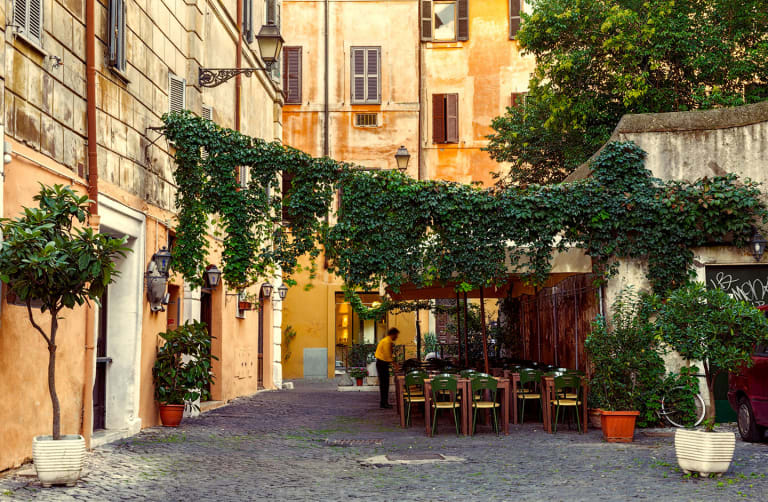
If your flight leaves in the afternoon, you will have reached the end of your trip. If not, you will still have the whole afternoon to enjoy and rest from all the sightseeing.
You can take another stroll through the center of Rome and return to the site you liked best for a photo tour, as a farewell to the Eternal City. Another option is to book a guided tour of Trastevere, in case you didn't have time the day before.
Rome is a very curious city, in the sense that no matter how many days you go, there will always be something left to see. In 2 days you will miss quite a few things, but as you can see you will see the most beautiful and important of the city in this getaway. If everything went well, you will want to come back as soon as possible!


















